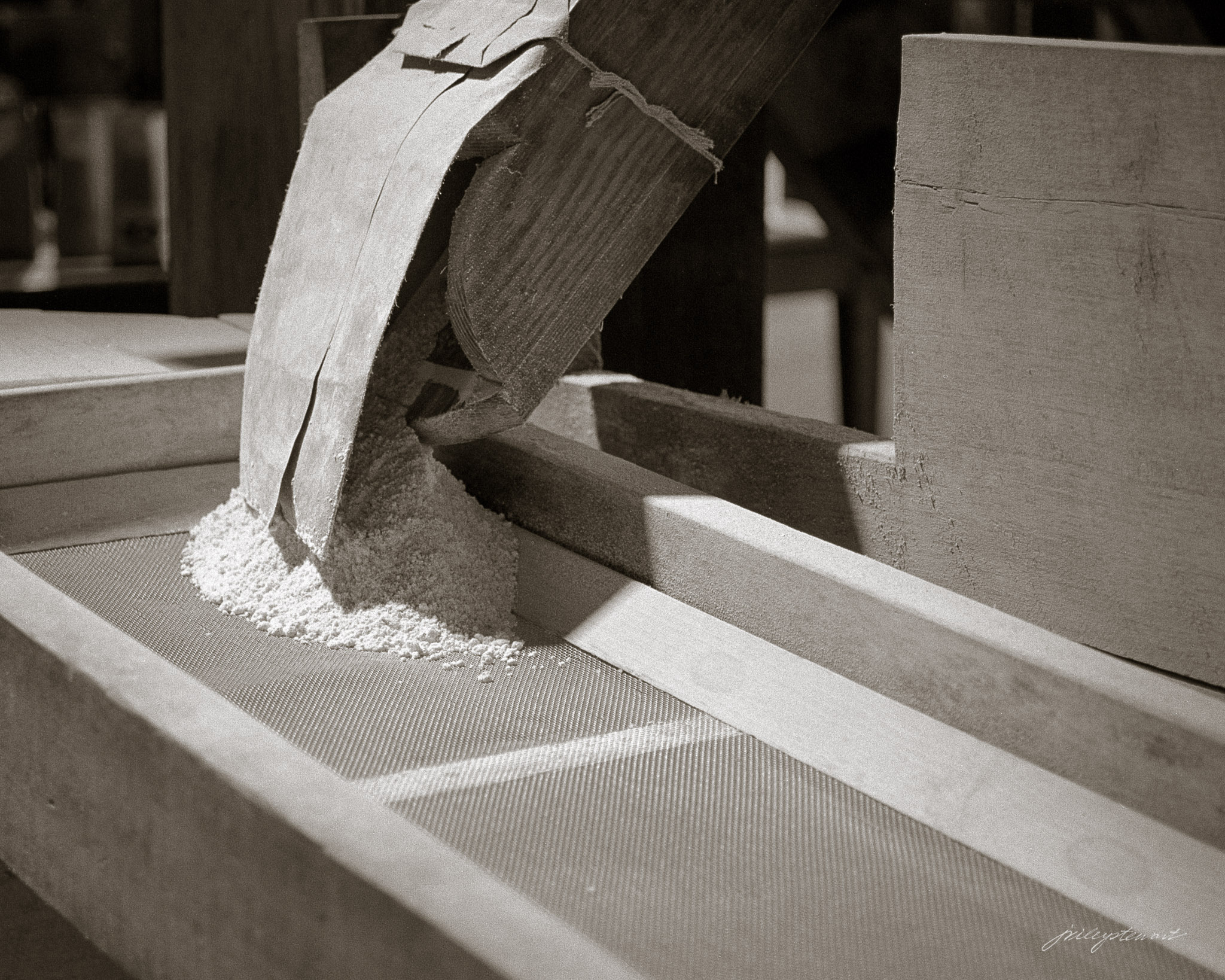Virginia Grist Project
Explore the ingenious machines man invented to turn grain into flour and learn something important about early American ingenuity.
About the Virginia Grist Project
“Virginia Grist” applauds the role that small town grist milling played in northern Virginia’s history and its early farming economy.
In the northern parts of Virginia, virtually every small town began with the building of a small, rustic gristmill. Since their settlement in the 18th Century, lowland valleys of northern Virginia counties were known for their rich soil, very capable of growing grain crops like wheat, corn, rye, and barley. Soon, enterprising pioneers began building gristmills where the grain could be turned into meal and flour for local consumption. Many of these early gristmills were small log structures with an external wheel driven by a reliable current of stream water. Vibrant towns soon grew up around the gristmills: the 1740s “Janney’s Mill” became the town of Waterford, Richard Brown’s 1730s mill became Taylorstown, the 1765 “Mercer’s Mill” became Aldie, and around the 1785 Burwell-Morgan Mill sprang the small town of Millwood.
Grist milling in Virginia became highly profitable during the 1800s. Markets for Virginian meal and flour expanded far beyond America. To meet demand, Virginian millers built grand stone and frame structures to replace the small log-built mills, and incorporated state-of-the art technologies for grinding grain. Those were the days of sophisticated double overshot water wheels (Aldie Mill), interior water wheels (Burwell Morgan Mill and George Washington’s Grist Mill), and elaborate systems of chutes and mechanical augers to move and package the grain and flour. Eventually, they replaced the huge old millstones with more efficient steel roller machines, and destiny eventually made these small town mills obsolete.
“Virginia Grist” celebrates the role that small town grist milling played in northern Virginia’s history and its early agrarian economy. When you see these quiet images, try to feel the busy-ness that once took place here. When you see these quiet images, try to feel the energy that once was
common here. Consider the dangers in working around noisy, giant, moving
machines in dimly lit spaces. Imagine the mill-workers putting in long
hard days and returning to their families at nightfall, exhausted but
proud. And consider the social community created by the Mill, for it was
often the heartbeat of the Town, where mill families all had something
in common: something extremely important to their very survival and
prosperity.
I created the images in "Virginia Grist" over the course of 18 months ending in 2014. That adventure took me to 5 historic sites that had, in varying degrees, benefited from past restoration projects. I found that each mill had its own story to tell. Each was filled with a sense of mystery hidden within the dark shadows; mysteries they were eager to share, if we only had the curiosity to stop and listen to them. I felt it important to tell their stories in black and white, and used larger format film to capture their full depth.
Large scale photographs from the Virginia Grist Project have been exhibited at Aldie Mill (2013), The Historic Balch Library, Leesburg (2014), and at the George Mason University Enterprise Center in Leesburg (2015), and the George Washington University Gallery (2016). I am eager to exhibit them further, because I know that with each showing, there is an opportunity to advance the preservation of these great spaces, and an opportunity to educate others about the ways and means of our early American culture and ingenuity.
I hope you enjoy the experience.











































